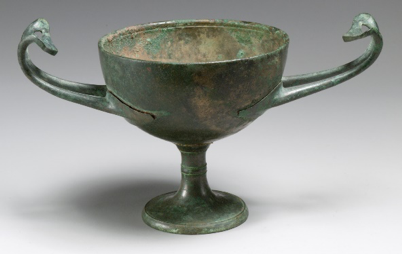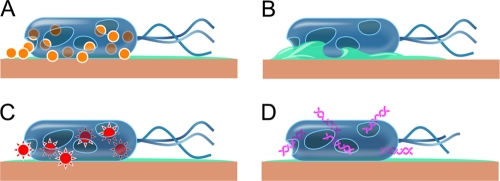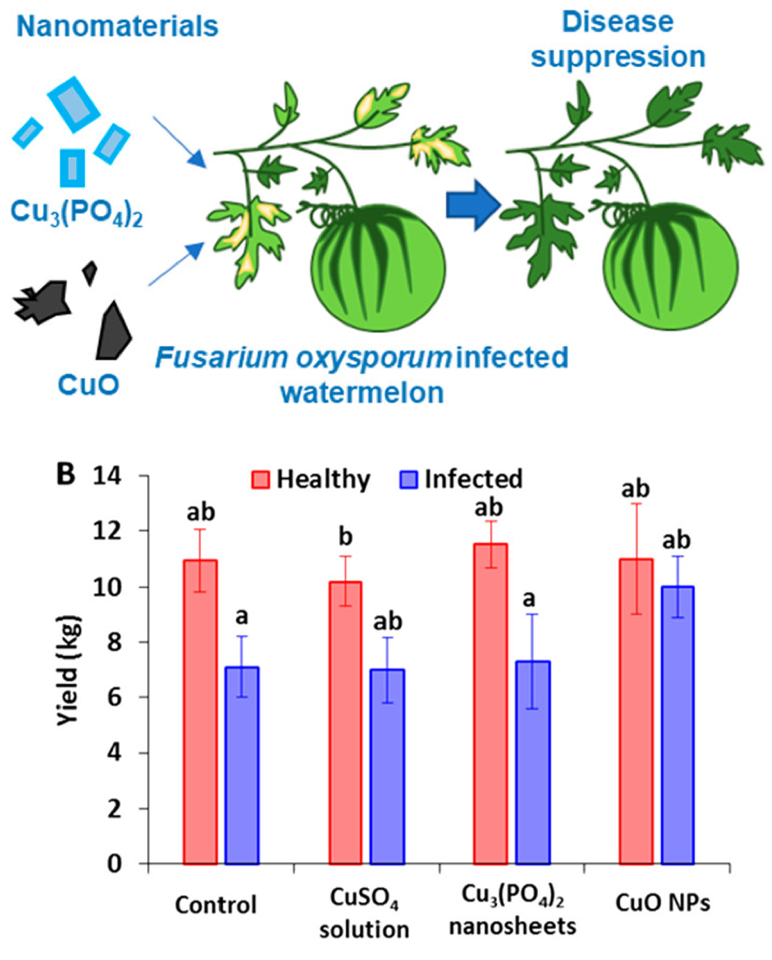When you hear “copper,” is the first thing that comes to your mind “medicine”? Probably not. You likely think of pennies (which are actually composed of mostly zinc here in the US), or maybe you think of wiring and conductors for electronics. But, believe it or not, copper has had a long history of medicinal use. Records from ancient societies like the Egyptians and Greeks tell of copper being used to treat a variety of ailments; from blurry vision and cataracts to digestive disorders and parasites, but most commonly as topical treatment of wounds.1 The ancients also used copper in drinking vessels as a means of sterilizing drinking water.2 In fact, inorganic remedies like this persisted into the modern age, falling out of favor with the advent of antibiotics in the early 1930s.

But this begs the question, what’s copper got going on here? How can a common metal have such a big impact that its use lasted thousands of years? As it turns out, copper is capable of a phenomenon known as “contact killing,”3 which is exactly what it sounds like. When microbes come in contact with it, they stop living. This occurs because copper is an essential micronutrient, and bacterial cells will take in copper ions under the assumption that they are getting their nutrients. Unfortunately for the little microbes, they eventually take in a lethal dose of ions. Too much copper can have a myriad of effects that interfere with regular cell functions, like maintaining osmotic pressure or preventing oxidative stress, and eventually cause the cell to stop functioning all together. To give you an idea of how little copper is really needed for nutrition, an adult human (with about 37 trillion cells!) needs at most 10 mg a day.

Trouble for the bacteria means benefits for humans. Due to copper’s property of contact killing, the EPA has recognized copper as the first solid antimicrobial material, with over 300 alloys listed as such in 2008. Some medical facilities make use of this by using copper alloys on touch surfaces.5 These are places like handles on doors and faucets or hand rails along staircases, areas where multiple people frequently touch. Thanks to contact killing, any germs left behind by someone turning a handle or holding a hand rail will likely die. The purpose of this is to reduce the amount of bacteria transferred from person to person by preventing build-up of microbes on commonly handled surfaces. At the same time, these surfaces pose no dangers to people as copper has not been shown to absorb through the skin.6 Comparing standard stainless-steel surfaces to copper during repeated contamination over the course of 24 hours shows the benefit of using copper instead of steel for touch surfaces.

Aside from finding a place in hospitals, antimicrobial copper has been employed in areas where people commonly come into contact with one another and risk transferring illnesses. For example, Hartsfield-Jackson Atlanta International Airport has retrofitted the drinking fountains with copper surfaces. Athletic training centers, such as the Gilmour Academy Ice Arena, uses custom made copper grips on weight lifting equipment.8 Even fast food chain Chick-fil-A has installed copper door handles on restrooms in a few locations.5
Beyond being used to fight bacterial disease in humans, copper can be used in agriculture to combat disease in plants as well. It is a common micronutrient added to fertilizers, and many applications to combat crop disease take advantage of copper at the nanoscale. Research has shown that copper can kill fungus as well as bacteria, and there are many types of easily obtainable copper-based fungal treatments for house plants, gardens, and farms.9
Conventional copper anti-fungal treatments have downsides, however. A lot of fungicides use copper salts as their source for copper metal. In chemistry, a salt is an ionic compound, meaning one portion carries a positive charge and the other portion carries a negative charge. These charges attract one another and form a crystal – ordinary table salt (NaCl) is a perfect example. When it comes to using copper salts to kill fungus on plants, there can be an inadvertent introduction of nitrates, sulfates, or other components of the salt compounds to the environment. Using copper nanoparticles instead of copper salts is one way to avoid these extraneous salt components. The nanoparticles can be applied directly by spraying a solution on the leaves of the plant, rather than into the soil around it. This helps to both prevent and reverse infection in some very popular crops, like coffee, cocoa, tea, and bananas.10 Very good news if you drink as much coffee as I do!

So it turns out copper is useful for more than just minting pennies. Aside from being a nutrient essential to bacterial and plant growth, it’s able to inhibit bacterial and fungal infections in some important situations. Its amazing ability to induce contact killing makes it a valuable supplement in the fight to prevent disease. From hospitals to gyms and even restaurants, copper fittings and fixtures can help combat bacterial growth and the spread of potential illnesses. And in gardens and farms it can help plants grow well and fight infections.
Despite these amazing applications, it’s important to remember that copper is just a supplement, not a substitute, to maintaining cleanliness for disease prevention. We all still need to clean up common areas and wash our hands regularly! It’s a bit of a wonder how society let this amazing metal fall to the wayside in our excitement with the discovery of antibiotics. Fortunately, this metal is starting to make a comeback, and soon maybe everyone will think about medicine as well as coins when copper is mentioned.
References
- The Copper Development Association. The Sumerians and Chaldeans. (n.d.)
- Sowder, A. Ancient Greek Bronze Vessels. In Heilbrunn Timeline of Art History. New York: The Metropolitan Museum of Art, 2000–. April 2008.
- Zeiger M, Solioz M, Edongué H, Arzt E, Schneider AS. Surface structure influences contact killing of bacteria by copper. Microbiologyopen. 2014;3(3):327–332. doi:10.1002/mbo3.170
- Grass G, Rensing C, Solioz M. Metallic copper as an antimicrobial surface. Applied Environmental Microbiology. 2010;77(5):1541–1547. doi:10.1128/AEM.02766-10
- Sun, L. The bacteria-fighting super element that’s making a comeback in hospitals: copper. The Washington Post, Sept 20, 2015.
- Agency for Toxic Substances and Disease Registry. Public Health Statement: Copper. CAS# 7440-50-8. Sept 2004.
- Usman, M. S., et al. Synthesis, characterization, and antimicrobial properties of copper nanoparticles. International Journal of Nanomedicine. 2013, 8, 4467. Doi: 10.2147/IJN.S50837
- CleanLink. Case Study: Ice Arena Reduces Risk Of MRSA, Other Bacteria With Antimicrobial Fixtures. Nov 14, 2004.
- Stone, A. & Baker, B. Organic Management of Late Blight of Potato and Tomato with Copper Products. eOrganic, March 18, 2010.
- Gianessi, L. & Williams, A. Without Fungicides, World Banana Exports Would Collapse. CropLife Foundation, August 2011.
- Borgatta, J., Ma, C., Hudson-Smith, N., Elmer, W., Plaza Pérez, C.D., De La Torre-Roche, R., Zuverza-Mena, N., Haynes, C.L., White, J.C. and Hamers, R.J., 2018. Copper Based Nanomaterials Suppress Root Fungal Disease in Watermelon (Citrullus lanatus): Role of Particle Morphology, Composition and Dissolution Behavior. ACS Sustainable Chemistry & Engineering, 6(11), 14847-14856. Doi: 10.1021/acssuschemeng.8b03379
